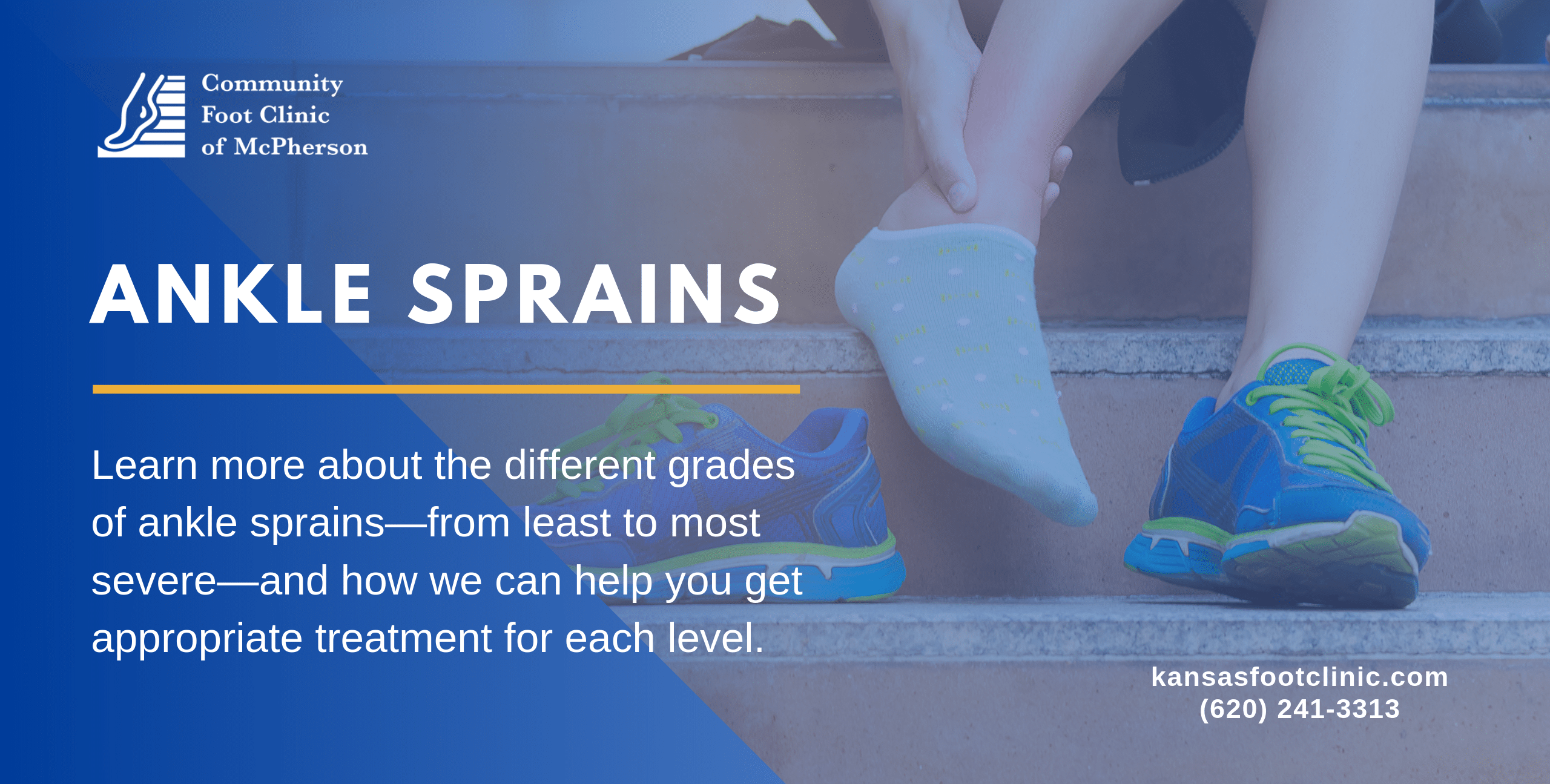Grading Your Ankle Sprain (and Figuring Out the Best Treatment)
What kind of grades did you get as a kid? Straight A’s? Barely above flunking? A mix of both?
Well, grades aren’t only used to measure academic aptitude. We also use them to mark the severity of ankle sprains, and help us determine an appropriate treatment course. A severe Grade III sprain requires a much different kind of response than a comparably simple Grade I sprain.
What Are Ankle Sprains?
But let’s start at the beginning.
A healthy, normal ankle joint is supported by several strong ligaments. A ligament, if you aren’t aware, is a type of tough, durable, fibrous connective tissue. They’re very similar to tendons—the difference is that ligaments connect bones to other bones, whereas tendons connect bones to muscles.
Ligaments are designed to flex gently under tension, then return to their original position. This allows joints to move and flex within an appropriate range, while still maintaining constant support and alignment.
However, when ligaments are flexed beyond their limit, they become stretched or even torn, and unable to return to their original shape. In addition to pain and swelling in the area, the joint itself may become destabilized.
When this happens to any (or several) of the ligaments surrounding and supporting the ankle joint, the result is an ankle sprain.
What Are the Grades of Ankle Sprains?
So when our office evaluates a sprained ankle, we’ll identify which ligaments specifically are sprained. But we’ll also categorize your sprain in more general terms as either Grade I, Grade II, or Grade III.
What’s the difference, you ask?
- Grade I sprain. If you have a Grade I sprain, the ligaments have stretched, but are not visibly torn. (Only microscopic tearing of the fibers will have taken place.) There will be pain, soreness, stiffness, and even some slight swelling is possible. But in all likelihood, you’ll still be able to put weight on your foot without searing pain. (That doesn’t mean you should keep putting weight on it, though … more on that in a minute.)
- Grade II sprain. With a Grade II sprain, your ligaments aren’t just overstretched—they’ve actually partially torn. As a result, the pain and swelling you feel will probably be a lot more significant and prolonged—and you may also notice bruising, too. You might be able to put a small amount of weight on your foot, but probably not your full weight. The ankle may feel a little wobbly when your doctor manipulates it in a certain direction.
- Grade III sprain. The worst of the worst. At least one ligament has fully torn—in fact, you might have even heard a popping sound at the time of the injury. Severe pain, swelling, and bruising will almost always be present. The ankle may also feel significantly wobbly and unstable, and you will be totally unable to put weight on it.
What Is the Treatment Plan For My Sprain?
As we said earlier, the best treatment plan for you varies significantly based on the type and grade of sprain you have—as well as your lifestyle goals.
That said, here’s an important caveat—ALL sprains, even Grade I, should get checked out by an ankle specialist. It might seem excessively cautious, but trust us: an ankle sprain is not something you want to take chances with.
If your sprain doesn’t heal properly the first time, you are much more likely to suffer additional sprains in the future. On top of that, you could develop chronic pain, post-traumatic arthritis, or even chronic wobbliness and instability in the ankle—all of which you definitely want to avoid.
So with that out of the way, let’s talk specifics.
During your appointment, we’ll make a thorough examination (performing imaging tests if necessary) to get an accurate diagnosis. It’s important not to skip this step—moderate to severe sprains can sometimes “hide” a more serious broken ankle underneath, so better safe than sorry.
If you only have a mild Grade I sprain, it’s quite possible you can handle your care at home, on your own, according to a plan that we’ll help set out for you. This may include:
- Using rest, ice, compression, and elevation (RICE therapy) to control pain and swelling, especially in the first few days after the injury.
- Use (as directed) of over-the-counter painkillers as necessary.
- Avoiding strenuous athletic activities or exercise for a period of time so that your ankle can heal.
A typical Grade I sprain may fully heal in as little as 1-3 weeks.
For more severe sprains, the ankle may need to be protected and restricted or immobilized during the healing process. We may recommend a brace, splint, walking boot, or in severe cases even a cast. Some physical therapy will likely be required afterward in order to fully restore your strength and range of motion to pre-injury levels.
Surgery may sometimes be required with severe Grade III sprains, especially if you have a history of ankle instability. However, most of the time it isn’t required.
A Grade II sprain might require up to 6 weeks of recovery time, while a complete tear or rupture (Grade III) may need several months of treatment.
The most important first step you can take, though—metaphorically speaking, anyway—is to reach out to the team at Community Foot Clinic of McPherson. Underestimating an ankle sprain will only lead to more significant problems down the line. By contrast, speedy evaluation and treatment will help you get back to full strength faster and safer, with the least possible downtime.
To schedule an appointment with Dr. Timson, please call (620) 241-3313 today. You can also use our handy request form online to have one of our trained staff members reach out to you.
McPherson Office
316 W. 4th Street
McPherson, KS 67460
P: (620) 241-3313
F: (620) 241-6967
© Community Foot Clinic of McPherson. All Rights Reserved.
Privacy Policy | Terms & Conditions
Web Design by CP Solutions
Marketed by VMD Services

